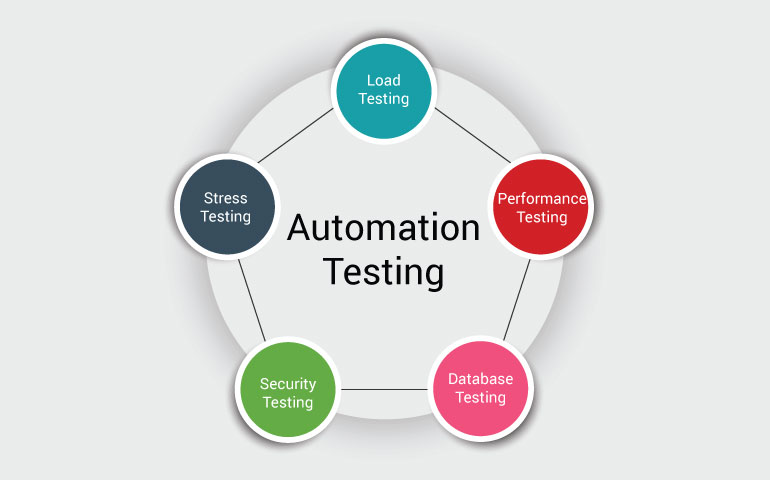Discovering the Future of Automation Testing in Software Program Development
Discovering the Future of Automation Testing in Software Program Development
Blog Article
From Guidebook to Automated Screening: A Comprehensive Guide to Transitioning Smoothly and Successfully
In the world of software application testing, the change from handbook to automated processes has actually become a significantly vital change for organizations looking for to enhance efficiency and precision in their screening practices. The trip from manual to automated screening is not without its challenges, yet when approached purposefully and with a clear strategy in mind, the advantages can be significant.
Benefits of Automated Examining
Automated testing supplies numerous advantages, improving performance and accuracy in software application advancement processes. One key benefit is the significant decrease in testing time. Automated tests can be run all at once on numerous tools and operating systems, dramatically speeding up the screening stage compared to hands-on testing. This raised efficiency permits faster comments on the top quality of the software, enabling designers to determine and attend to concerns immediately.
In addition, automated testing guarantees a greater level of precision in finding defects. Consistency in testing is also improved, as automated examinations perform the same steps precisely each time they are run.
Picking the Right Devices

First of all, evaluate your needs and goals. Comprehend the range of your project, the modern technologies included, and the ability of your team. This analysis will assist you establish the features and capacities you require in your testing tools.
Secondly, take into consideration the compatibility of the devices with your existing systems and procedures. Smooth combination with your existing software growth lifecycle is vital to guarantee a smooth shift to automation.
Furthermore, examine the scalability and versatility of the tools. As your screening requires advance, the tools should have the ability to adjust and fit modifications properly.
Lastly, consider the support and area around the tools. Robust support and an energetic customer neighborhood can give useful sources and support when executing automated screening. By meticulously considering these aspects, you can pick the right tools that straighten with your requirements and established the phase for a successful transition to automated testing.
Writing Effective Test Scripts

When crafting test scripts, it is vital to think about the details requirements of the software program being examined and guarantee that the scripts resolve all crucial performances. Descriptive and clear naming conventions for test manuscripts and examination instances can check here enhance readability and maintainability. Furthermore, including mistake handling mechanisms within the test scripts can assist in determining and addressing issues quickly.
In addition, arranging examination scripts into modular components can improve reusability and scalability, decreasing redundancy and improving performance in examination script maintenance. Regular testimonials and updates to examine manuscripts are important to equal advancing software program demands and functionalities. By complying with these concepts, testers can develop robust and reliable test manuscripts that add dramatically to the success of automated testing processes.
Integrating Automation Into Workflows
Reliable assimilation of automation tools right into existing operations improves processes and enhances performance within software application development cycles. When integrating automation right into workflows, it is important to identify repeated tasks that can be automated to save time and decrease human mistake. By flawlessly integrating automated screening tools like Selenium or Appium into the software program advancement lifecycle, groups can accomplish faster feedback on code changes, resulting in quicker pest discovery and resolution. This integration permits continuous testing throughout the advancement procedure, making certain that any kind of issues are recognized early, leading to higher software program top quality. Furthermore, automation can be made use of to activate tests immediately after each code devote, giving instant recognition and maximizing testers to concentrate on even more complicated situations. Proper assimilation of automation tools needs cooperation between development, testing, and procedures teams to establish a unified workflow that maximizes efficiency and efficiency in supplying top notch software.
Making Certain a Smooth Change
Successfully transitioning to automated testing involves thorough planning and careful execution to lessen disruptions and make the most of performance in the software development process - automation Learn More testing. To make sure a smooth shift, it is necessary to start by carrying out a complete analysis of the current testing procedures and recognizing locations where automation can bring one of the most significant click for more benefits. Engaging with all stakeholders beforehand in the process, including designers, testers, and task supervisors, is critical for gathering assistance and buy-in for the automation initiative
Interaction is vital during this change phase. Clear communication of the objectives, advantages, and expectations of automated screening assists to handle any type of resistance or concerns that may arise. Additionally, providing adequate training and resources for group members to upskill in automation devices and techniques is vital for making certain a successful transition.

Conclusion
In final thought, transitioning from handbook to automated testing offers various benefits, including boosted effectiveness and integrity. By choosing the ideal tools, writing effective examination manuscripts, and integrating automation effortlessly into process, organizations can make certain a effective and smooth shift. It is necessary to embrace automation as a valuable property in software application testing processes to improve general quality and efficiency.
In the world of software application testing, the shift from manual to automated processes has actually come to be a significantly essential change for organizations looking for to improve efficiency and accuracy in their testing methods. Automated tests can be run simultaneously on multiple tools and running systems, considerably speeding up the screening stage compared to hand-operated testing. Uniformity in testing is additionally improved, as automated examinations perform the very same actions precisely each time they are run.To make sure the successful application of picked screening devices, the production of effective examination manuscripts plays an important duty in verifying the functionality and efficiency of automated processes - automation testing. By complying with these principles, testers can develop durable and efficient test scripts that contribute dramatically to the success of automated testing processes
Report this page